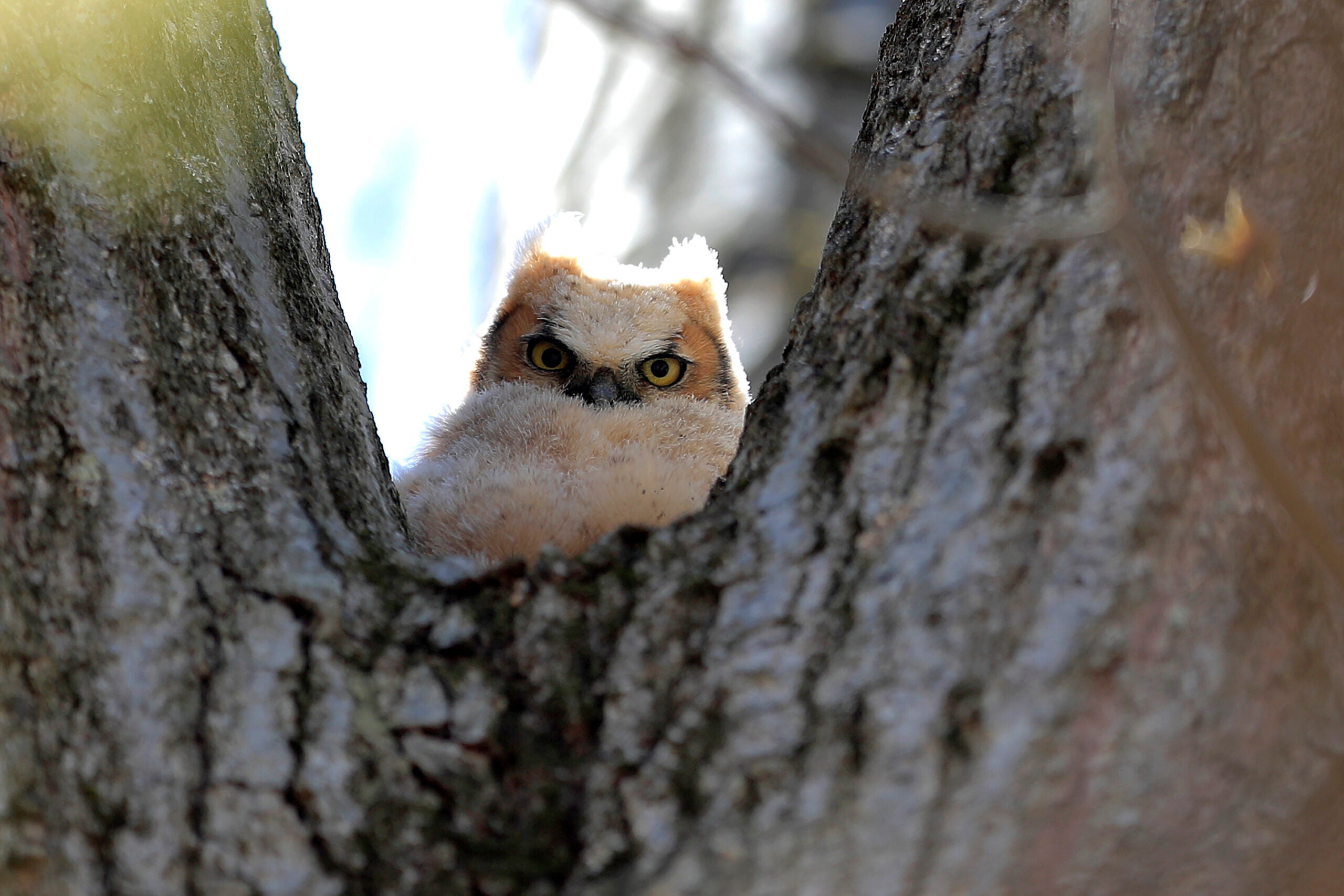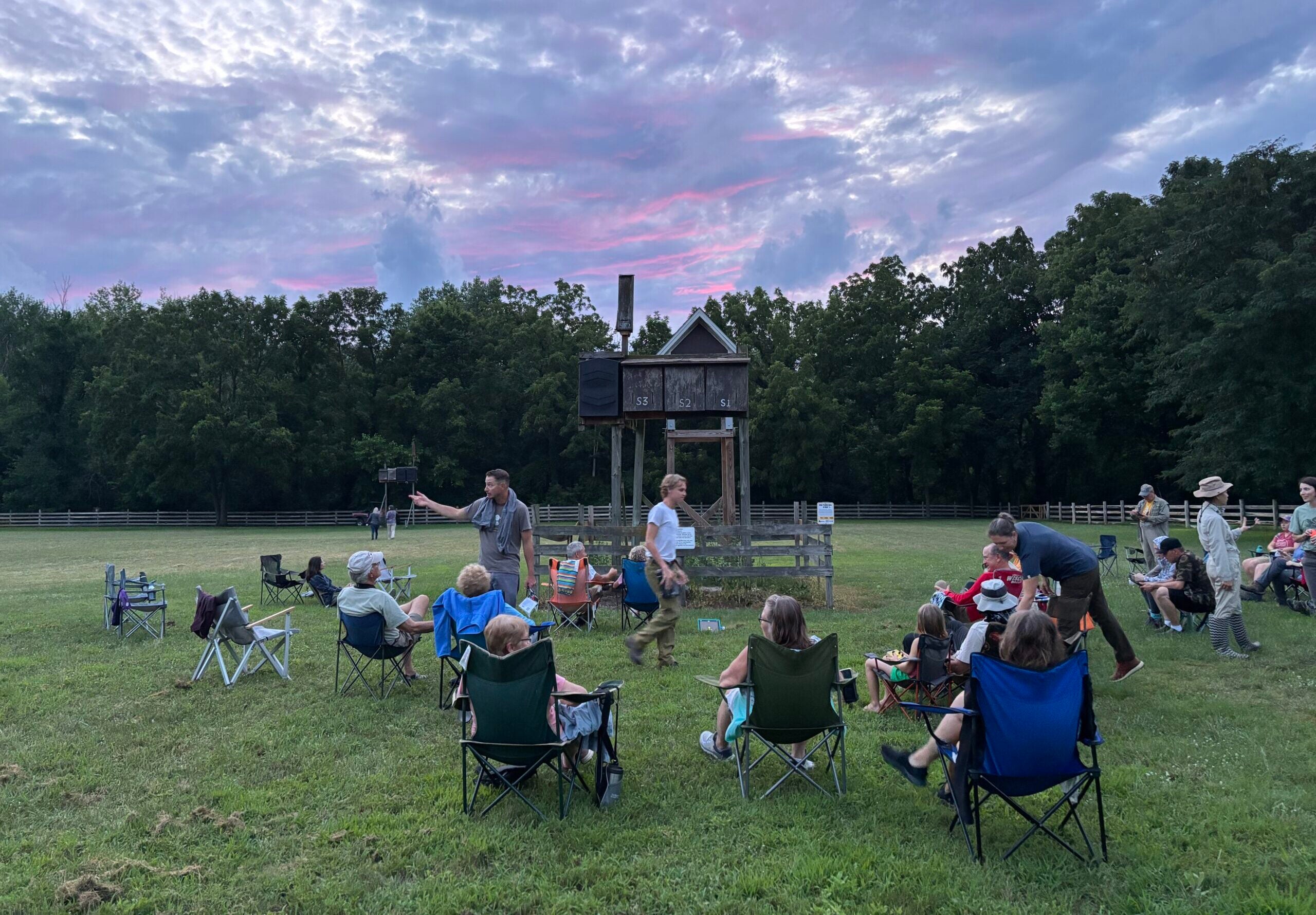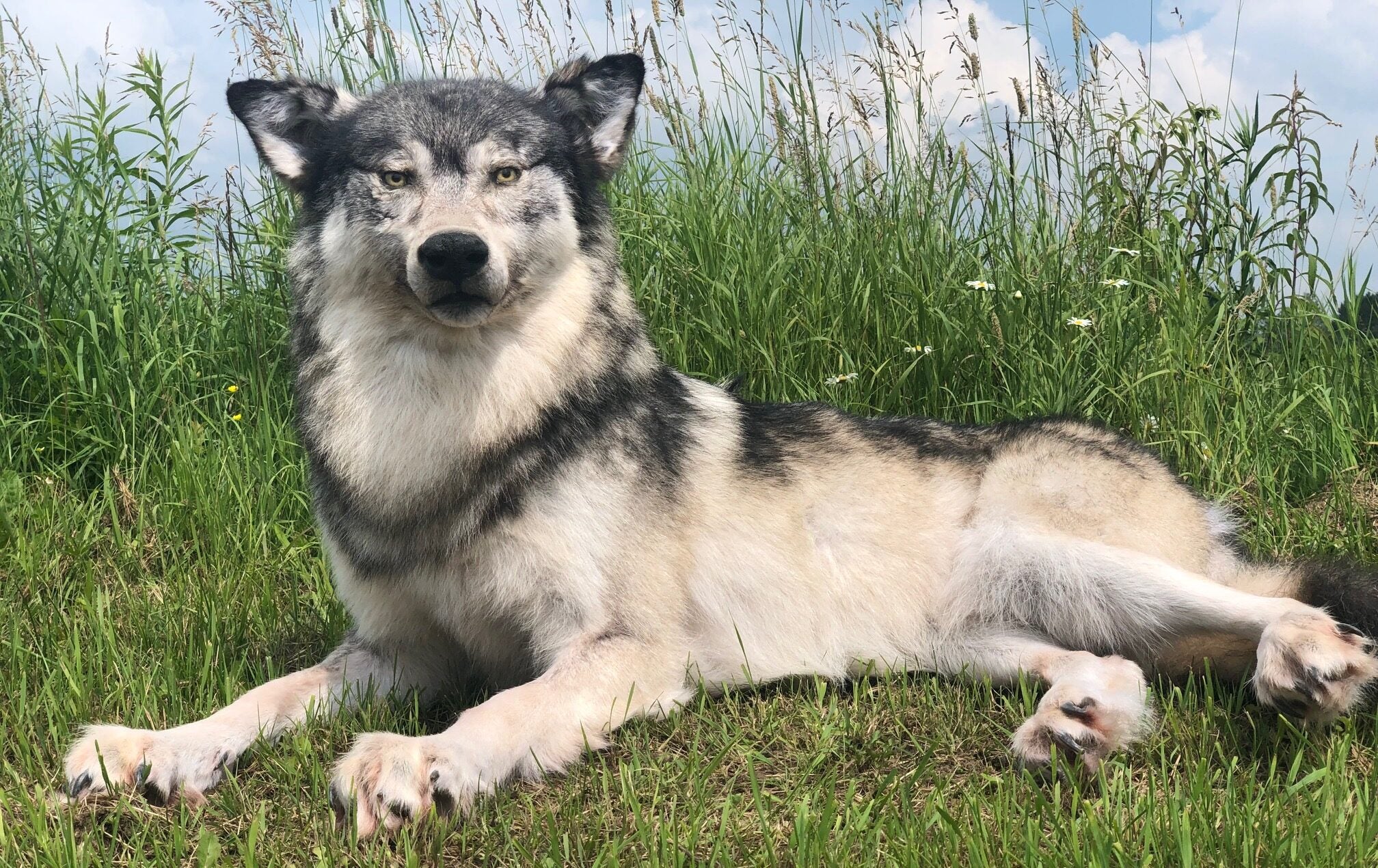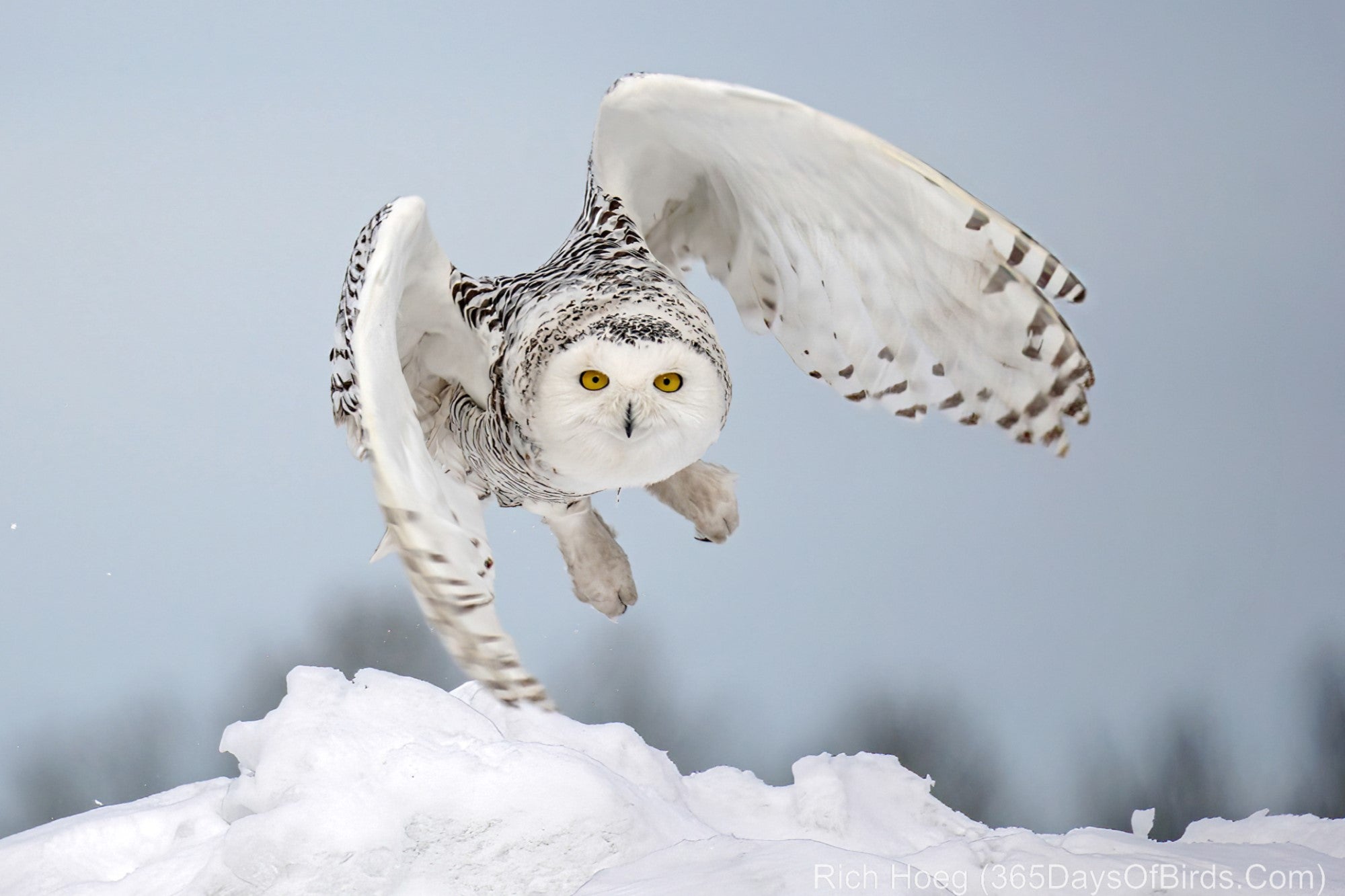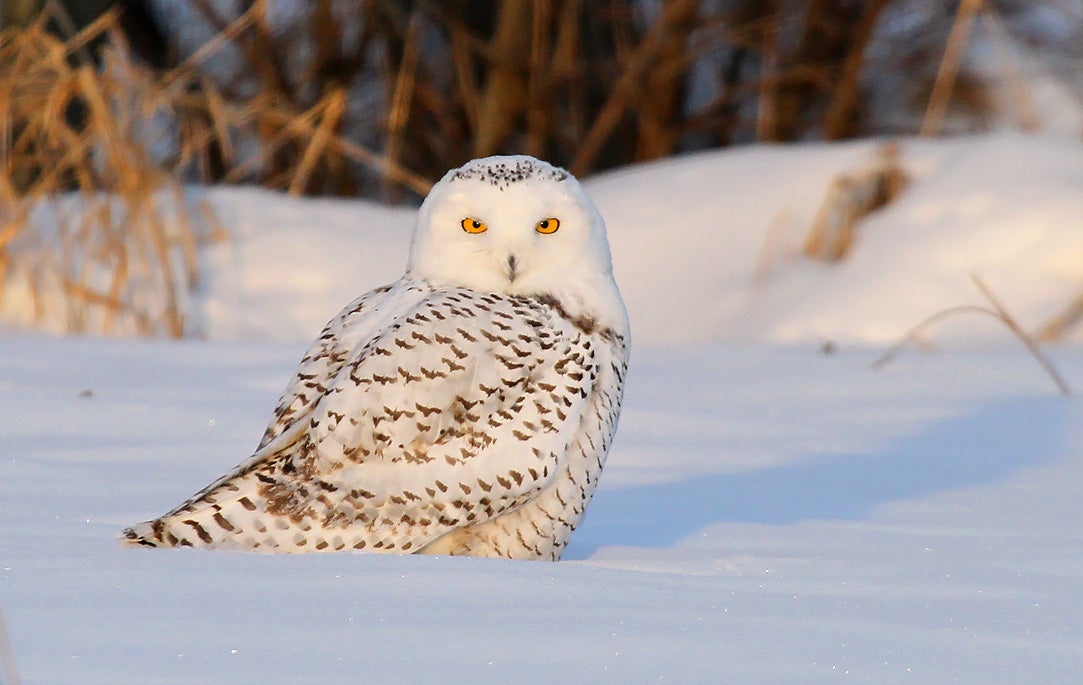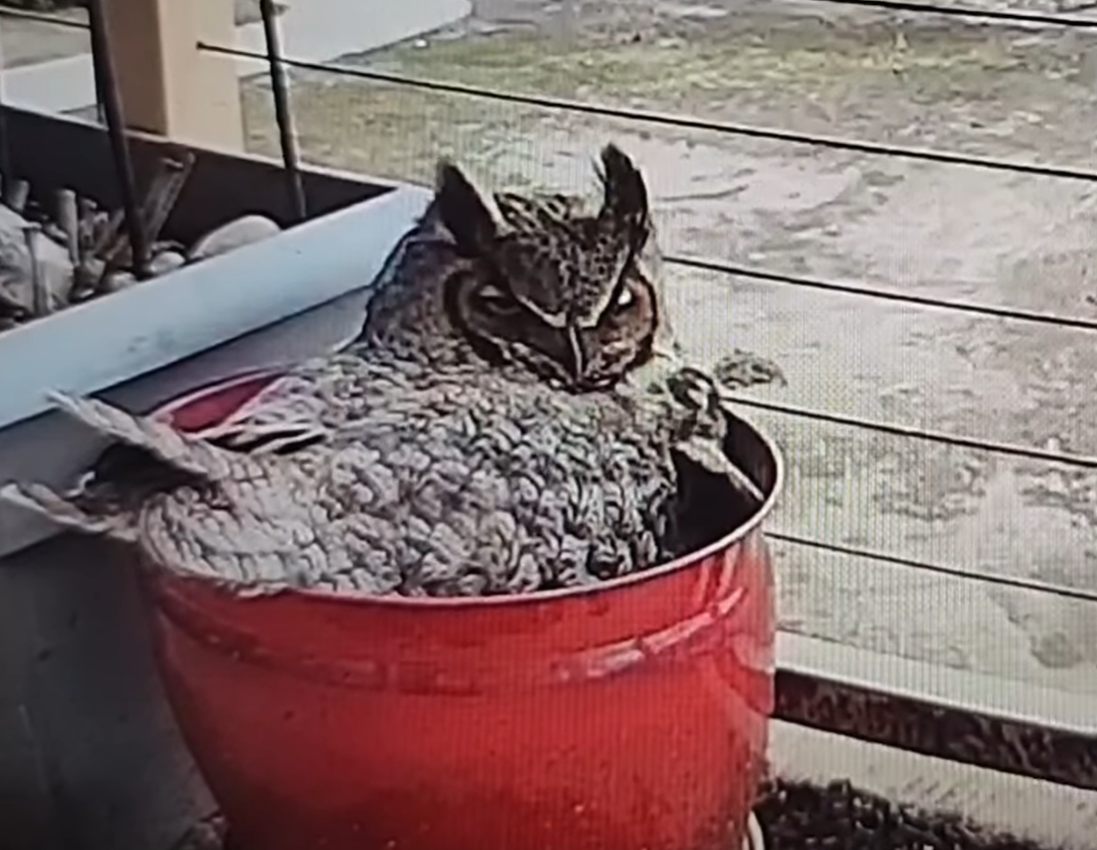Over the last few weeks, owl fledglings have been taking their first steps out of the nest in Wisconsin.
Karla Bloem, executive director of the International Owl Center, said she generally marks Memorial Day weekend as the time when baby owls begin to be out and about and flying, but there are still likely a few stragglers.
As night hunters with a range of calls that depend on the season and the situation, owls are often difficult to detect. But while you may not hear or see them yet, they’re out there, she said.
News with a little more humanity
WPR’s “Wisconsin Today” newsletter keeps you connected to the state you love without feeling overwhelmed. No paywall. No agenda. No corporate filter.
Bloem has clues for identifying distinctive characteristics of five owls you can hear around Wisconsin.
Barred Owl
Barred owls are easier to hear than to see. The noisy owls have brown and white feathers, dark brown eyes and are most likely to be found in forests near water in the eastern half of the United States.
Their primary song sounds like, “Who cooks for you? Who cooks for you all?” Bloem said, though their calls can vary.
“And they also do a scream like a woman being murdered,” she said. “If you hear really insane sounds out in the woods in the middle of the night, it’s probably a barred owl.”
Great Horned Owl
One of the most common owls in North America, the great horned owl, is also one of the most adaptable. It is found in cities, countryside, deserts and forests alike across the continent. A powerful predator that can prey on animals larger than itself, the great horned owl’s yellow eyes and large ear tufts make it visually distinct.
Great horned owls’ hoots are deep and soft, but they don’t talk as much as barred owls, Bloem said.
“Some individuals are less talkative than others,” she said. “And another contributing factor is if they don’t have close neighbors, they’re probably not going to be saying as much.”
Eastern Screech Owl
No bigger than a pint glass, these tiny owls are found east of the Rockies in woods, suburbs and parks.
The best listening opportunities for eastern screech owls are in wooded areas at night — though their name is deceiving, Bloem said.
“Screech owls don’t screech,” she said. “Everybody assumes juvenile great horned owls doing their obnoxious begging calls are screech owls because those screech. But screech owls do a soft whinny, and they also do a trill.”
Northern Saw-whet Owl
About the size of a robin, northern saw-whet owls are the smallest owls in the eastern U.S. They are also generally silent owls, giving a monotonous series of tooting whistles in the late winter and early spring, according to the Audubon Society.
Baby northern saw-whet owls look much different than the adults, which have large round heads, no ear tufts and a white “V” between yellow eyes.
“The babies are just crazy colored, they’re like pumpkin-orange on the bellies, chocolate-brown on the head,” she said. “They’re totally adorable little things because they’re just tiny and so differently colored than other owls.”
Long-eared Owl
Long-eared owls tend to blend in, both with their call and their appearance. Their brown and white striped feathers give them a camouflaged look — though their most distinctive feature, the long ears, is often described as giving the bird a surprised expression.
“The long-eared owl does the simplest, stereotypical owl call you could ever think of,” Bloem said. “It’s just simply, ‘hoo,’ and then about a four-second pause, ‘hoo,’ and then a pause.”
Wisconsin Public Radio, © Copyright 2025, Board of Regents of the University of Wisconsin System and Wisconsin Educational Communications Board.

